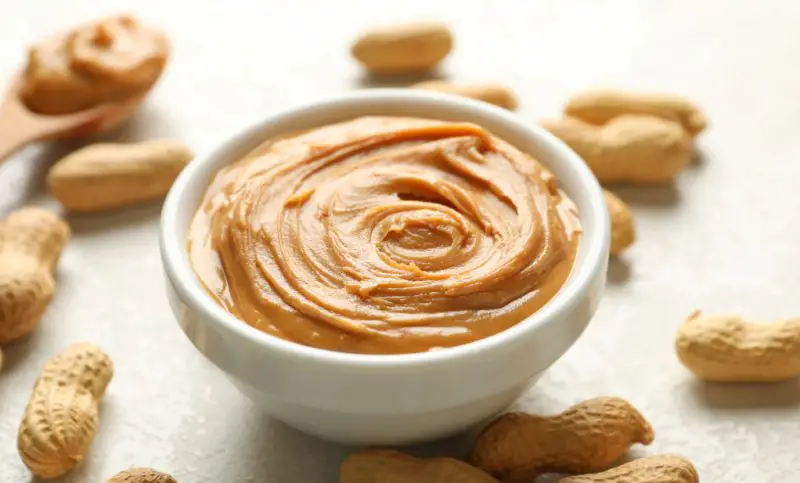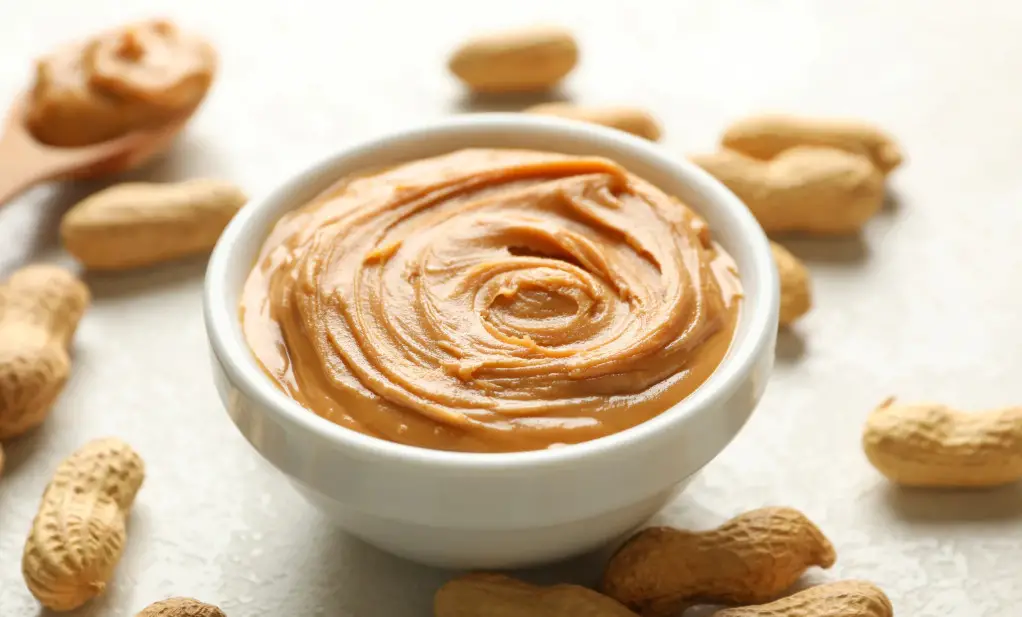Peanut butter is one of the most beloved spreads in the world. From breakfast toast and smoothies to cookies and savory sauces, it finds its way into countless recipes. While peanut butter is often celebrated for being rich in protein and healthy fats, one common concern people have is its sugar content. With growing awareness about sugar’s impact on health, consumers are increasingly curious about how much sugar peanut butter actually contains and whether it should be part of a balanced diet.
This guide takes a deep dive into peanut butter’s sugar content. It explores the natural sugars found in peanuts, the added sugars included during manufacturing, and how different types of peanut butter compare. You will also learn how to read nutrition labels, identify hidden sugars, and make healthier choices when shopping. By the end, you will have a clear understanding of peanut butter’s sugar levels and how it fits into a nutritious lifestyle.
Understanding the Basics of Peanut Butter

Peanut butter is made primarily by grinding roasted peanuts into a smooth or crunchy paste. On its own, peanuts naturally contain a very small amount of sugar, less than two grams per serving. This means that pure peanut butter made only from ground peanuts will not be considered a high-sugar food. The main components of peanuts are healthy monounsaturated fats, plant-based protein, and dietary fiber.
However, many commercial peanut butter brands add more than just peanuts to their products. Ingredients like sugar, honey, molasses, or corn syrup are often added to enhance sweetness and flavor. These additions can significantly raise the sugar content of the spread, making it quite different from natural or homemade peanut butter. Consumers often overlook this difference and assume that all peanut butters are equally nutritious.
Another factor to consider is how peanut butter is processed. Natural varieties that contain only peanuts and perhaps a small amount of salt will have minimal sugar. In contrast, conventional or flavored peanut butters may contain anywhere from three to eight grams of added sugar per serving. Understanding this difference is crucial for making informed dietary choices.
Natural Sugar in Peanuts
Peanuts themselves are not a sweet food. They contain about 1.5 to 2 grams of naturally occurring sugar per 100 grams. This sugar is not harmful and is part of the nut’s natural carbohydrate content. When peanuts are ground into butter without any additives, the sugar level remains very low, typically less than one gram per two-tablespoon serving.
The natural sugar in peanuts is accompanied by a significant amount of protein and fiber, which slow digestion and prevent blood sugar spikes. This is why natural peanut butter is often recommended as part of a balanced diet for people managing blood sugar levels. The natural sugar in peanuts behaves very differently in the body compared to refined sugars added during processing.
It is important to note that natural sugar content does not make peanut butter unhealthy. On the contrary, it is a nutrient-dense food that provides essential vitamins like niacin, vitamin E, and minerals such as magnesium and phosphorus. The real concern arises when added sugars change the nutritional balance of the product.
Added Sugar in Commercial Peanut Butter
One of the biggest differences between natural peanut butter and mass-produced peanut butter is the addition of sugar. Many popular brands add sugar to enhance flavor, reduce bitterness, and appeal to a wider audience. While a small amount of sugar may not seem significant, it quickly adds up when consumed regularly.
Commercial peanut butter typically contains two to six grams of sugar per serving. In some flavored varieties, especially those marketed to children, the sugar level can reach as high as eight to ten grams per serving. This is equivalent to about two teaspoons of sugar, hidden in what appears to be a healthy spread.
Added sugar does not contribute any nutritional benefits. It provides only empty calories and can lead to health issues such as weight gain, insulin resistance, and increased risk of heart disease if consumed in excess. Recognizing the presence of added sugars in peanut butter is essential for people who are mindful of their sugar intake.
Types of Peanut Butter and Their Sugar Levels
Natural Peanut Butter
Natural peanut butter contains only peanuts and sometimes a small amount of salt. It is free from added sugars, hydrogenated oils, and artificial flavorings. This type of peanut butter has about one gram or less of sugar per serving, coming exclusively from the peanuts themselves. It is the healthiest option for those who want to enjoy peanut butter without excess sugar.
Conventional Peanut Butter
Conventional peanut butter is what you typically find in large supermarket brands. These often include sugar, stabilizers, and hydrogenated oils to improve texture and shelf life. The sugar content in conventional peanut butter usually ranges from three to six grams per serving, making it much sweeter than its natural counterpart.
Flavored Peanut Butter
Flavored peanut butter varieties, such as chocolate peanut butter or honey-roasted peanut butter, contain the highest sugar levels. These products may have between six and ten grams of sugar per serving, sometimes even more. While they may taste indulgent, they are closer to a dessert spread than a nutritious nut butter.
Reading Nutrition Labels
Understanding how much sugar peanut butter contains begins with reading the nutrition label. The total sugar listed includes both naturally occurring sugars and added sugars. To know the difference, you must look for the line that specifies “added sugars,” which many countries now require on packaging.
If a peanut butter label lists peanuts and salt as the only ingredients, you can be confident that the sugar content comes naturally from the peanuts. However, if you see sugar, dextrose, honey, or corn syrup in the ingredient list, these indicate added sugars. Comparing different brands side by side can reveal striking differences, even when the packaging suggests they are all “healthy” options.
Serving size is another important factor. Most peanut butter servings are measured at two tablespoons, but many people use more. If a brand contains four grams of sugar per serving and you use double the amount, you are consuming eight grams of sugar in one sitting, equal to two teaspoons.
How Peanut Butter Sugar Content Compares to Other Spreads
When evaluating peanut butter, it is helpful to compare it with other common spreads. Jam and jelly, for instance, can contain more than ten grams of sugar per tablespoon, making them significantly higher in sugar content. Chocolate spreads can go even higher, often exceeding twenty grams per serving.
Peanut butter, especially natural varieties, stands out as a relatively low-sugar option in comparison. This is one reason why peanut butter can still be part of a balanced diet, even for those watching their sugar intake. However, choosing a natural or low-sugar peanut butter is key, since conventional and flavored varieties may have sugar levels closer to sweet spreads.
The comparison highlights the importance of not assuming all spreads are equally sugary. Peanut butter, in its purest form, is among the better choices, but the market variety you choose determines its health impact.
Health Effects of Sugar in Peanut Butter
Consuming small amounts of sugar in peanut butter is generally not harmful, especially if balanced with an overall healthy diet. The problem arises when added sugars accumulate from multiple food sources throughout the day. Peanut butter with high sugar content contributes to daily intake without providing additional nutrients.
Excessive sugar consumption can lead to energy crashes, weight gain, and metabolic issues. Over time, consistently high sugar intake is linked to type 2 diabetes, fatty liver disease, and cardiovascular problems. Peanut butter should be enjoyed in moderation, and low-sugar varieties should be prioritized to avoid unnecessary health risks.
On the positive side, natural peanut butter provides protein and healthy fats that slow the absorption of sugar, reducing its impact on blood glucose levels. This makes it a better option than many other sweetened snacks or spreads. Choosing natural peanut butter can help you enjoy its benefits without the downsides of added sugar.
Peanut Butter in a Balanced Diet
Peanut butter can be part of a balanced diet when consumed mindfully. For adults, the recommended daily sugar intake is about 25 grams for women and 36 grams for men. A serving of natural peanut butter contributes less than one gram of sugar, which is negligible. In contrast, a serving of sweetened peanut butter could account for up to one-quarter of the daily limit.
Pairing peanut butter with whole foods such as fruit, oats, or whole-grain bread enhances its nutritional profile. For those who are physically active, peanut butter can provide a good source of sustained energy. The key is to select varieties with no added sugar or minimal sugar to maximize its health benefits.
It is also worth noting that moderation is essential. Even natural peanut butter is calorie-dense due to its fat content. Enjoying one to two servings per day as part of a diet rich in fruits, vegetables, lean proteins, and whole grains ensures that peanut butter supports rather than hinders health goals.
Making Healthier Peanut Butter Choices
Consumers can make healthier choices by seeking out brands that use minimal ingredients. Look for products that list only peanuts and salt, avoiding those that include sugar, hydrogenated oils, or artificial additives. Organic and natural brands often provide these options, though they may require stirring to mix separated oils.
For those who enjoy flavored peanut butter, consider making your own at home. By blending roasted peanuts in a food processor, you can create a natural peanut butter and sweeten it slightly with a touch of honey or fruit puree if desired. This allows you to control the sugar content while still enjoying a flavorful spread.
Shopping with awareness is essential. Marketing terms like “all-natural” or “reduced-fat” do not always mean low in sugar. Reduced-fat peanut butter, for example, often has higher sugar content to compensate for the loss of fat. Checking the label remains the most reliable way to ensure you are choosing wisely.
Conclusion
Peanut butter is a nutritious and versatile food, but its sugar content varies widely depending on the type you choose. Natural peanut butter contains less than one gram of sugar per serving, while conventional and flavored varieties may contain anywhere from three to ten grams. Understanding the difference between natural and added sugars, reading nutrition labels carefully, and choosing products with minimal ingredients are key to making healthier decisions.
In moderation, peanut butter can be part of a balanced diet that supports energy, satiety, and overall health. By opting for natural varieties and being mindful of portion sizes, you can enjoy all the benefits of peanut butter without consuming unnecessary sugar. Ultimately, the choice lies in the jar you pick—so let it be one that aligns with your health goals.
FAQs About Peanut Butter and Sugar
Does peanut butter naturally contain sugar?
Yes, peanuts have a very small amount of natural sugar, usually less than one gram per serving when made into peanut butter. This natural sugar is balanced by protein, fiber, and healthy fats, which prevent spikes in blood sugar levels. Pure peanut butter with no additives remains a very low-sugar food.
How much added sugar is in regular peanut butter?
Conventional peanut butter brands often include between three and six grams of added sugar per two-tablespoon serving. Flavored varieties, such as chocolate or honey-roasted peanut butter, may contain even higher amounts, sometimes up to ten grams per serving. This added sugar changes the nutritional value significantly.
Is natural peanut butter healthier than sweetened peanut butter?
Natural peanut butter is generally healthier because it contains only peanuts and sometimes salt, with no added sugar or oils. It provides protein, healthy fats, and fiber without unnecessary calories from refined sugar. Sweetened peanut butter, while tasty, is closer to a dessert spread than a nutritious staple.
Can peanut butter fit into a low-sugar or diabetic diet?
Peanut butter, especially natural varieties, can fit well into a low-sugar or diabetic-friendly diet. Its protein and fat help slow the absorption of sugar, making it a stable energy source. However, it is important to choose options without added sugar and to consume moderate portions.
How do I know if peanut butter has added sugar?
The easiest way is to read the nutrition label and ingredient list. If you see sugar, corn syrup, dextrose, or honey listed, then the peanut butter contains added sugar. Natural peanut butter should only list peanuts and possibly salt, with less than one gram of total sugar per serving.
Disclaimer: The content provided on this website is for informational and educational purposes only and should not be considered professional advice.



